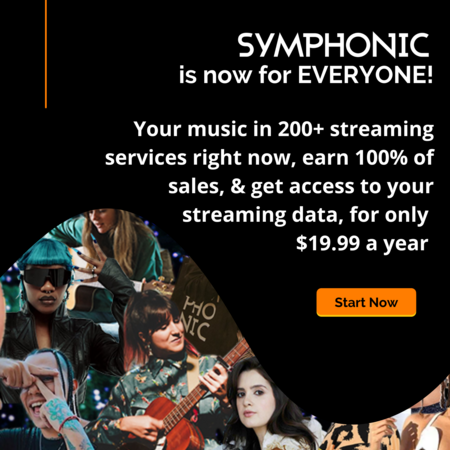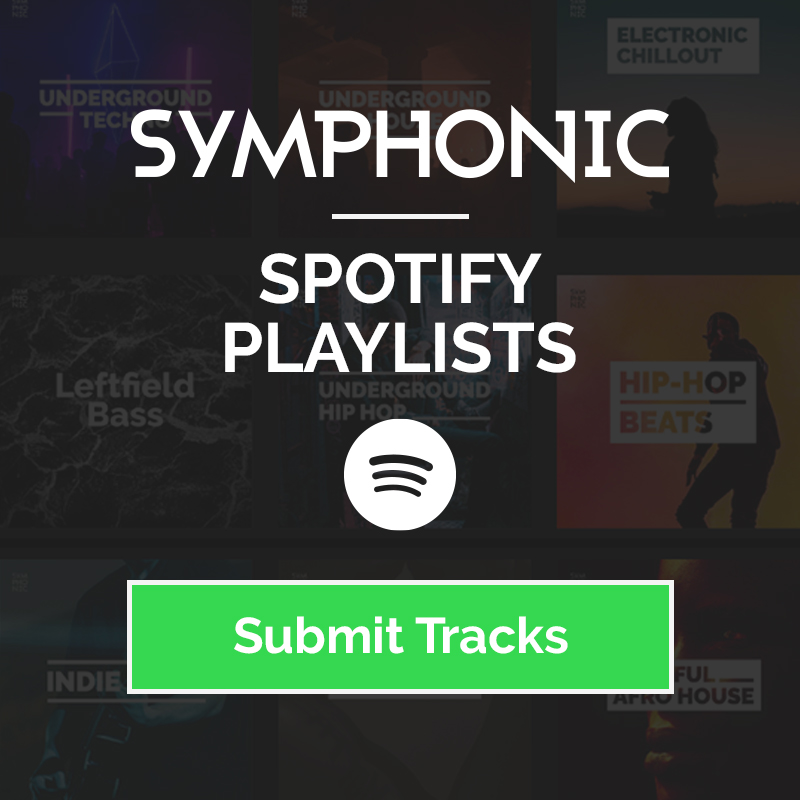
by Francesca | Jan 4, 2024 | Music Marketing
Your fans are everything. Without them, you likely wouldn’t be where you are today! (Or where you are hoping to be.) Fans are a community, and in order to strengthen it, you need to treat it as such. Below are a few ways to make your community of fans stronger than ever.
Here are five simple, but unique, ways to strengthen your fan base.
Create a name
Try to think of a large artist off the top of your head. Then, think of their fans. They likely have their own name right? For example, Ariana Grande has “Arianators.” Selena Gomez has “Selenators.” Lady Gaga has “Little Monsters.” The list goes on. The point is: recognize that your fans are an entity of their own, and they’re bound to grow.
Start a Facebook group
Once you create a name for your fans, it’s time to take it to the next level. Create a private Facebook group for you and your fans to interact on a personal level. Offer exclusive giveaways, information about upcoming releases, Q+As and more. Start by inviting friends and family and then reach out to your general fans. As long as you stay active, it should grow.
Stream on Twitch
Streaming on Twitch is a fun way to interact with your fans and make them feel more involved. You could stream live DJ sets, studio sessions, behind-the-scenes or even go into a realm like gaming. Make sure to promote your streams and shout out fans, so they know they are recognized.
Do meet-and-greets
Meet and greets are one of the best ways to interact with your fans. These in-person hangouts can be done before (or after) shows. You can have these backstage, at a pizza spot near the venue, or just in the crowd. Talking to your fans in person is one of the best ways to get to know them!
Offer giveaways
Giveaways are the best way to give back to your fans. Thank them for their appreciation and support by offering merch giveaways, free downloads and more. The possibilities are endless!
There are a ton of ways to strengthen your fan base, but we hope one of these works for you! Make sure to show as much love to your fans as they show to you!
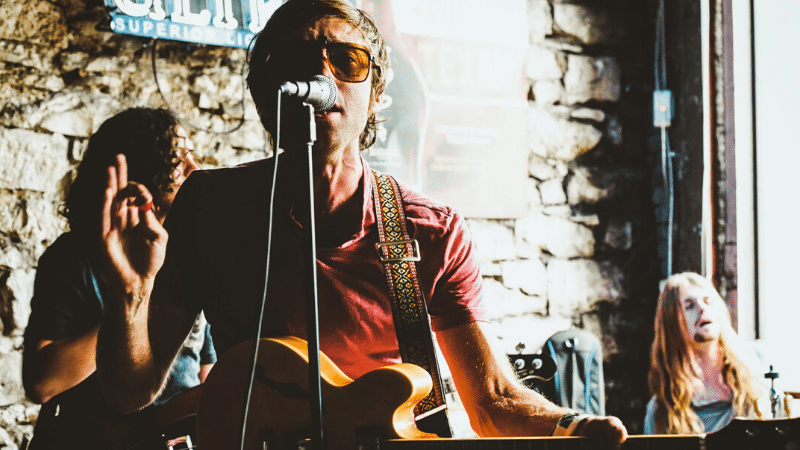
by Francesca | Jan 4, 2024 | Music Industry
Touring internationally can be one of the best experiences of your life… if you plan it properly. Without enough detailed planning, the whole thing could fall apart and put you in more debt than when you started. That being said, how do you know if it’s the right time to pursue an international tour? How do you get started if it is?
In this post, we’ll cover everything you need to know about going on tour overseas without getting lost in a (possibly) literal jungle.
Things You Need to Know About Touring Internationally:
How to know if you’re ready
Going on tour at all requires having an audience that will show up to your shows. Plain and simple. If you typically only have fans in your local scene, it doesn’t make sense to spend the immense amount of money it takes to tour just to play for empty venues in another country.
That being said, if you have a large following online and you frequently get DM’s and messages like, “Come to Brazil!” or “Please do a show in London!!” that’s a good sign you need to expand beyond the U.S.. Truth be told, you’ll know when the time is right. Your fans will demand it.
How to decide where to tour
How you choose where to tour is monumental in ensuring your overall success. With the help of Spotify and SoundCloud analytics, booking a tour has become almost an exact science. These tools let you see which tracks your audience is listening to the most and where those plays are coming from. So, if you want to optimize the chance of having sold out shows at every venue, gathering this background info will tell you exactly what your audience wants to see more of, so you can perfectly deliver every time.
Check out: How to Book a Tour Using Spotify and Soundcloud Analytics to learn more.
Figure out your passport situation
This should be obvious, considering you need a passport to travel literally anywhere out of the country at all, but many people put this off until the last minute and assume everything will be fine and dandy. Please do not be one of those people.
If you overlook properly securing your passport and making sure it’s all up to date, you could end up planning and booking an entire tour just to get to the airport on the day of and be turned away because of your freakin’ passport. That’s months of wasted time and a ton of hard earned money down the drain. Before you even start planning the tour, get your passport(s) in order.
Find out if you need a work visa
Okay, so technically you could be shady and choose the illegal route here, aka doing gigs and hoping the government doesn’t find out. However, we advise against that for obvious reasons. We understand you may not want to shell out the extra money to pay for a visa, but think about the alternative. Without one, your gear could be confiscated, you’ll be forced to miss tour dates, and you’ll lose way more money than you ever want to lose.
The best thing you can do is research the places you’re planning on going, see what’s legally required of you, and do it. Some places don’t require any documentation, but some do. It’s always better to be safe than sorry (and broke).
Transportation
If you’re going somewhere like Canada or Mexico, there’s not much to worry about since you can drive you and your equipment however you normally do in whatever vehicle you normally use. However, what if your tour is in France? Or Sweden? This is where your expenses are really going to add up.
Don’t worry, you’ve got some options. In many places, traveling by train is a great option if you travel light and plan on renting all your equipment. However, if you have all your gear in tow, this is no longer an option. In that case, your best bet is to rent a van. Don’t have enough money? Try to borrow a van from a local band in that area or schedule your shows together so you can carpool. Use all the resources available to you.
Additionally, in most european countries, Americans can drive with their American license just fine for short periods of time. However, some places require you to have an International Driving Permit. Again, always do your research.
Some things to remember:
- Many countries have different electricity voltages and outlet plug shapes. Make sure you have adaptors.
- Amps are heavy as shit. Rent them when you get there.
- When renting anything, get multiple quotes to avoid being taken advantage of.
- Bring a physical map (cue shocked gasp) just in case something happens to your smartphone.
- Plan out how payments are going to be allocated between bandmates beforehand to avoid any and all arguments.
When it comes to planning something as big as touring, you can’t be too prepared. Make sure you have back-up plans for your back-up plan. You’ll be saving yourself a lot of stress in the long run if you do.
Yes, touring internationally is a lot of work. Hell, touring anywhere is a lot of work. But going on tour can be the most fun you’ll ever have and it’ll foster amazing memories you’ll cherish forever. You’ll learn a lot and evolve as you go, and that’s the beauty of it.
Be smart, always do your research, and let the good times roll.
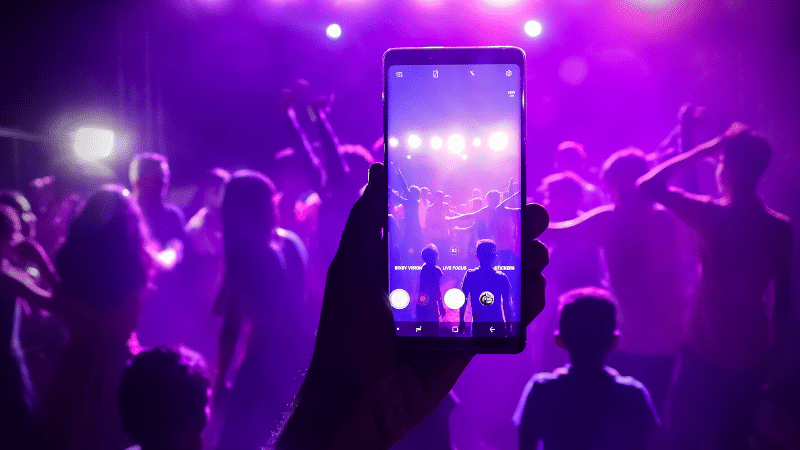
by Francesca | Jan 4, 2024 | Social Media
If you’re an active social media user, then you don’t need to be told how important accurate image sizing is on socials. Social platforms change their preferred image sizing and formatting every year, so make sure to update yours accordingly! To help you out, here are the updated requirements for 2024…
Social Media Image Sizes for 2024
TikTok
- TikTok Profile Photo Size: 20 x 20 pixels (minimum)
- TikTok Video Size: 1080 x 1920
✨ PRO TIP: The ideal aspect ratio for TikTok videos is 1:1 or 9:16.
Facebook
- Profile Photo: 170 x 170 pixels
- Stories: 1080 x 1920 pixels
- Cover Photo: 851 x 315 pixels
- Posts & Timeline Photos: 1200 x 630 (minimum 600 x 315)
- Facebook Event Cover Photo: 1200 x 628 pixels (recommended)
✨ PRO TIP: To avoid any compression or distortion, upload a JPG or PNG file.
X (Twitter)
- Header Photo: 1,500 x 500 pixels
- Profile Photo: 400 x 400 pixels
- Twitter In-Stream Photos: 1600 x 900 pixels
✨ Find more information on in-stream photos, visit the Twitter Help Center.
Instagram
- Profile Photo: 320 x 320 pixels
- Photo Thumbnails: 161 x 161 pixels
- Instagram Stories: 1080 x 1920 pixels
- Photo Size: 1080 x 1080 pixels (square); 1080 x 1350 pixels (portrait)
✨PRO TIP: When you share an Instagram image that is sized over 1080 pixels, Instagram will size it down to 1080 pixels for you.
Instagram Reels
- 1080 x 1920 pixels (This is an aspect ratio of 9:16.)
- Cover photo: 1080 x 1920 pixels
- Keep in mind that Reels are cropped to a 1:1 image in your profile feed and a 4:5 image in the home feed.
LinkedIn
- Recommended Profile Photo: 400 x 400 pixels
- Profile Cover Photo: 1584 x 396 pixels
- Blog Post Link Images: 1200 x 627 pixels
- Company Logo: 300 x 300 pixels
- Company logo size for ads: 100 x 100 pixels
YouTube
- Profile Photo: 800 x 800 pixels
- Banners: 2048 x 1152 pixels
- Thumbnail: 1280 x 720
- Video: 1280 x 720
✨ PRO TIPS:
- Make sure the focus of your photo is centered for best results.
- Files should be JPEG, GIF, BMP or PNG. Animated GIFs won’t work.
- Photos will render at 98 x 98 pixels.
YouTube Shorts
- Aspect Ratio: 9:16
- Max Length: 60 seconds
- Supported Video File Types: .MOV, .MPEG4, MP4, .AVI, .WMV, .MPEGPS, .FLV, 3GPP, and WebM.

by Francesca | Dec 20, 2023 | Music Industry
Newsletters serve as one of the easiest ways to stay up to date. Want to stay ahead of the game? Learn from the experts right from your inbox with some of the best email newsletters in the industry.
Best Music Industry Newsletters
Back Of House
Back Of House is a weekly newsletter created to help you stay up to date with global live music industry news, learn about industry best practices, and discover new ideas to fuel your brain. Whether you’re looking for updates on live events or on the hunt for job openings, Back Of House probably has what you’re looking for and more.
Your Morning Coffee
Industry veteran, Jay Gilbert writes one of my favorite newsletters, Your Morning Coffee. This highly-curated newsletter offers a weekly snapshot of the New Music Business. Not only that, Jay and Mike Etchart, former host of the syndicated Sound & Vision Radio program, host a fantastic weekly podcast. In it, they break down the top stories, latest news and trends in the industry.
Beats & Bytes
By the makers of Nue Agency, a Creative Music Agency located in New York City, Beats & Bytes is an innovative newsletter that sits at the center of everything music, brands, and technology for the industry. This one curates the industry’s top news and biggest trends and is a staple in my inbox.ntributors from all over the industry.
Symphonic Weekly
By subscribing to our newsletter, Symphonic Weekly, you’ll get updates on important trends in the music industry along with tips to help guide you through distributing, monetizing, and promoting your music with articles from yours truly, as well as co
Sym Latino Newsletter
If you’re subscribed to our Symphonic Weekly Newsletter, you already know it’s jam-packed with weekly industry updates, insights, how-to’s, company highlights and more. Our Symphonic Latino newsletter makes sure our Spanish speaking clients and supporters never miss a beat either.
Simpl.
Simpl, the badass music promotion service, has an awesome newsletter as well. From music promo tips and tactics to industry news and more, this one has a plethora of good info for anyone looking to broaden their horizons of music knowledge.
Hypebot
Founder and editor, Bruce Houghton, created Hypebot‘s newsletter to capture daily news and commentary on the music industry. Industry professionals and DIY musicians who are looking for a one-stop-shop of news should definitely be subscribed to this one.
Water & Music
Cherie Hu is a music industry and tech journalist with bylines in Billboard, Forbes, Rolling Stone, and more. Water & Music breaks down the biggest ideas in the music industry and serves as a staple in my inbox each week.
Music Ally
The Knowledge is Music Ally’s weekly free newsletter. It offers an at-a-glance overview of the “whirling, weird maelstrom that is the modern music industry”, right to your inbox every Friday. It not only gives you industry news, but also some of the best resources to help you learn key insights as a musician.
Trapital
Trapital offers a free weekly newsletter keeps its readers posted on the latest trends from some of the biggest players in the game. They’ve been featured in The New York Times, Wall Street Journal, CNBC, Fortune, and more. For those looking to stay ahead of the industry’s ever-changing trends in the hip-hop landscape, this newsletter is for you.
Motive Unknown’s Daily Digest
Motive Unknown is a digital marketing consultancy founded by Darren Hemmings. Hemmings started the Daily Digest to summarize every day’s news in music, tech, and apps.
Music Biz Worldwide
One of the industry’s favorite newsletters comes from the mind of Tim Ingham. This one brings you in-depth news along with insights and industry analysis’ for the international music scene. From interviews to the latest acquisitions in the game, Music Biz Worldwide is the resource to gain a global outlook on the industry.
Platform & Stream
Platform & Stream, created by Jeff Hyatt, covers the latest news about streaming platforms. Whether you’re interested in the latest innovations in streaming technology or insights about the impact streaming has on the music business, you’ll get tons of updates about the industry on the daily. There are well over a hundred issues of this newsletter out to date, so if you’ve been meaning to do some catching up, this is the place for it.
In Conclusion…
Working in this industry means keeping up with its fast-paced trends, innovative tech advancements and everything in between. Subscribing to these newsletters is an easy way to keep yourself informed and stay ahead of the game.
Enjoy
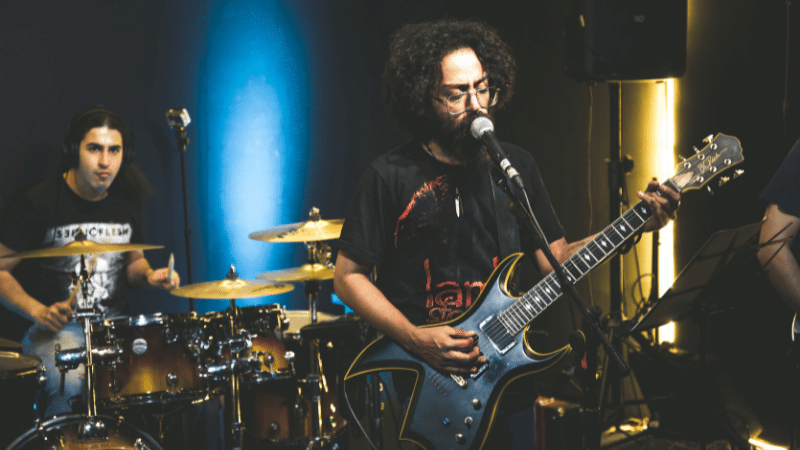
by Francesca | Dec 20, 2023 | Legal
The legal aspects of this industry aren’t always so straightforward. That’s why we place the utmost importance on providing as much information as we can to help you navigate through it with ease. There are many different types of contracts artists and labels will encounter throughout their careers, so let’s break it down a bit. In this post, you’ll learn about 6 major types of record label contracts you should definitely know about. Let’s dive in…
6 Types Of Record Label Contracts
Exclusive Recording Contract
The exclusivity of this contract applies to both the Artist (as a recording and performing musician) and to the songs written by the Artist during the term of the agreement. An additional number of songs written prior to the term are also assigned in the agreement. The exclusivity in respect to the Artist applies for the length of the agreement and in respect to the songs for the life of copyright (unless otherwise agreed).
- This one is a useful agreement for a label looking to engage an artist exclusively for a number of years, both as a performer and in relation to his/her songs.
Music Distribution Contract
With this agreement, the owner of master recordings grants an exclusive right to distribute ‘records’ embodied in any format (compact discs, phonograph records, audio cassette tapes, digital audio tapes, DVD, etc) for a certain period of time (the Term) and in certain countries (The Territory).
Non-Exclusive Recording Contract
A Non-Exclusive Recording Contract is an agreement under which copyright on certain recordings is assigned (from Artist to Label), but the Artist is not engaged exclusively by the Label as a recording and performing musician.
Therefore, the Artist is able to free to assign copyrights not covered in this agreement to other labels.
- This type of contract is a flexible contract for a label looking to license particular recordings but do not wish to tie up an artist exclusively for a number of years or for a number of releases.
- It can be used as a trial agreement before moving on to an exclusive recording type of arrangement.
360 Deal Recording Contract
A 360 Deal Recording Contract is an agreement which sets out the conditions in which a music company engages an artist with respect to his/her/their services as a recording artist, songwriter, composer/arranger of music and actor/actress (for film, TV and Theatre).
It also grants the music company merchandise, sponsorship and endorsements rights for the use of the artist’s names, likenesses, and related Intellectual Property. In addition, it’s important to note that 360-type deals have come around as the recording labels response to three major trends in the music industry in recent years:
- The steady decline of revenue from record sales
- The increase in prices of tickets to live events and fan expenditure on merchandise and
- The strengthening of the capabilities of the collecting societies and publishers getting better at their roles which translates in income from public performance and synchronisation becoming more and more significant.
Music Composition and Recording Service Contract
A Music Composition and Recording Service Contract is an agreement under which an artist is engaged by a company to compose, arrange, record and produce a piece of music to be used in the company’s own production (TV, Film, Video Game, etc).
With this, the artist receives a full and final fee as remuneration for the services provided and all copyrights are transferred to the company and moral rights waived. However, the artist remains entitled to his/her writer’s share of public performance royalties received directly from his/her performance right society (PRS, BMI, ASCAP, GEMMA, etc).
- Company gets granted a license to use the artist’s name, likeness, voice and biographical data in relation to the company’s production and artist promises that the music delivered to the company does not infringe any third parties’ copyright.
- This contract is useful for companies looking to commission both recordings and compositions from an artist for use in TV, films, etc.
Recording and Publishing Agreement On Certain Recordings
A Recording and Publishing Agreement On Certain Recordings is a type of agreement under which an Artist assigns both recording and publishing rights to a label in exchange for an advance, royalties and a commitment from the label to fund and release the recordings and procure synchronization and/or performance license for the compositions.
- Recording rights are assigned for the length of copyright (50 years after release) and Publishing rights for a rights period of fifteen (15) years.
- The label will have six (6) months from delivery of the songs to procure a release of the recordings and performance and/or synchronization usages for the Compositions.
- This type of agreement is especially useful for labels looking to acquire both recording and publishing rights from artist for particular songs using one agreement.






